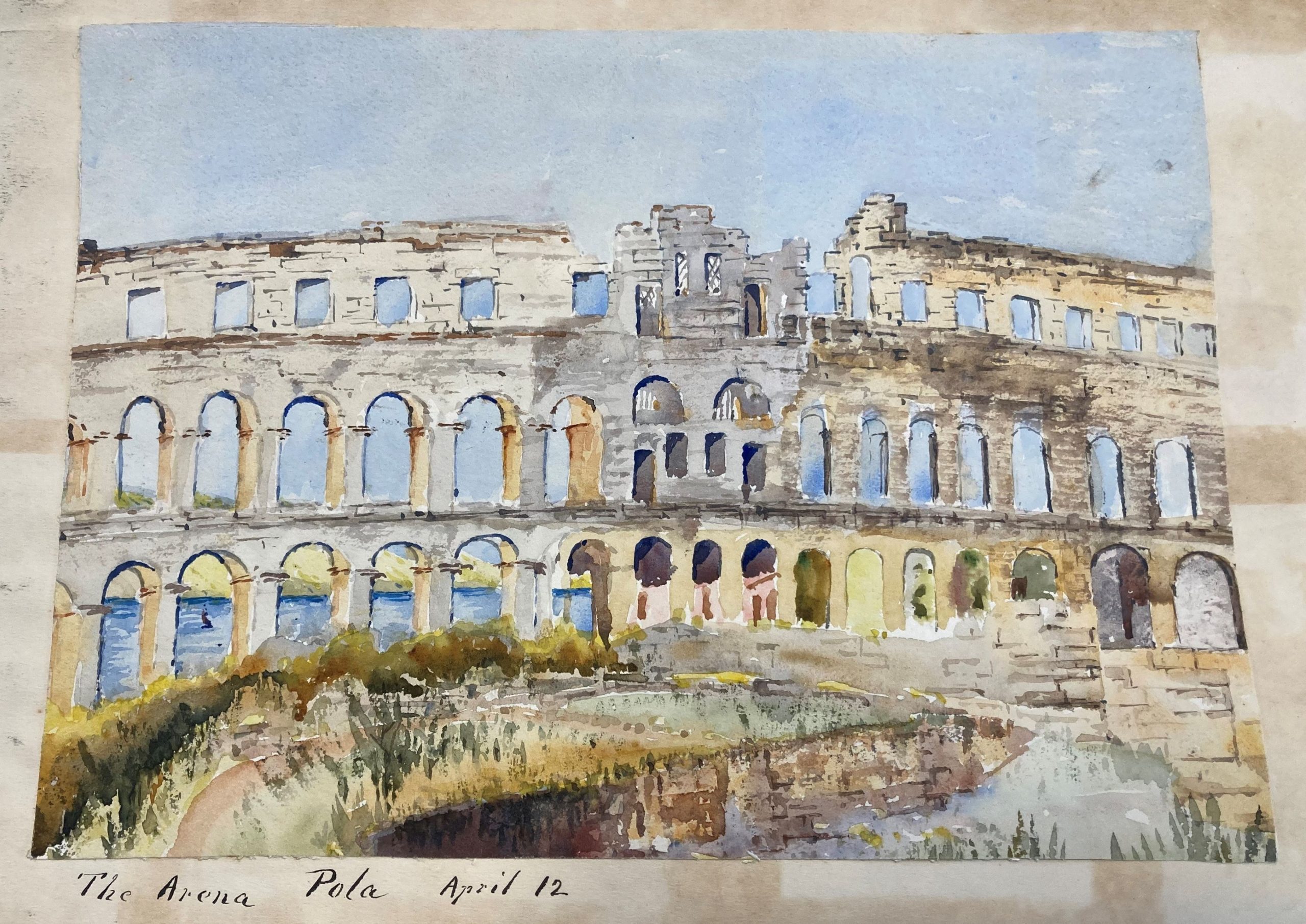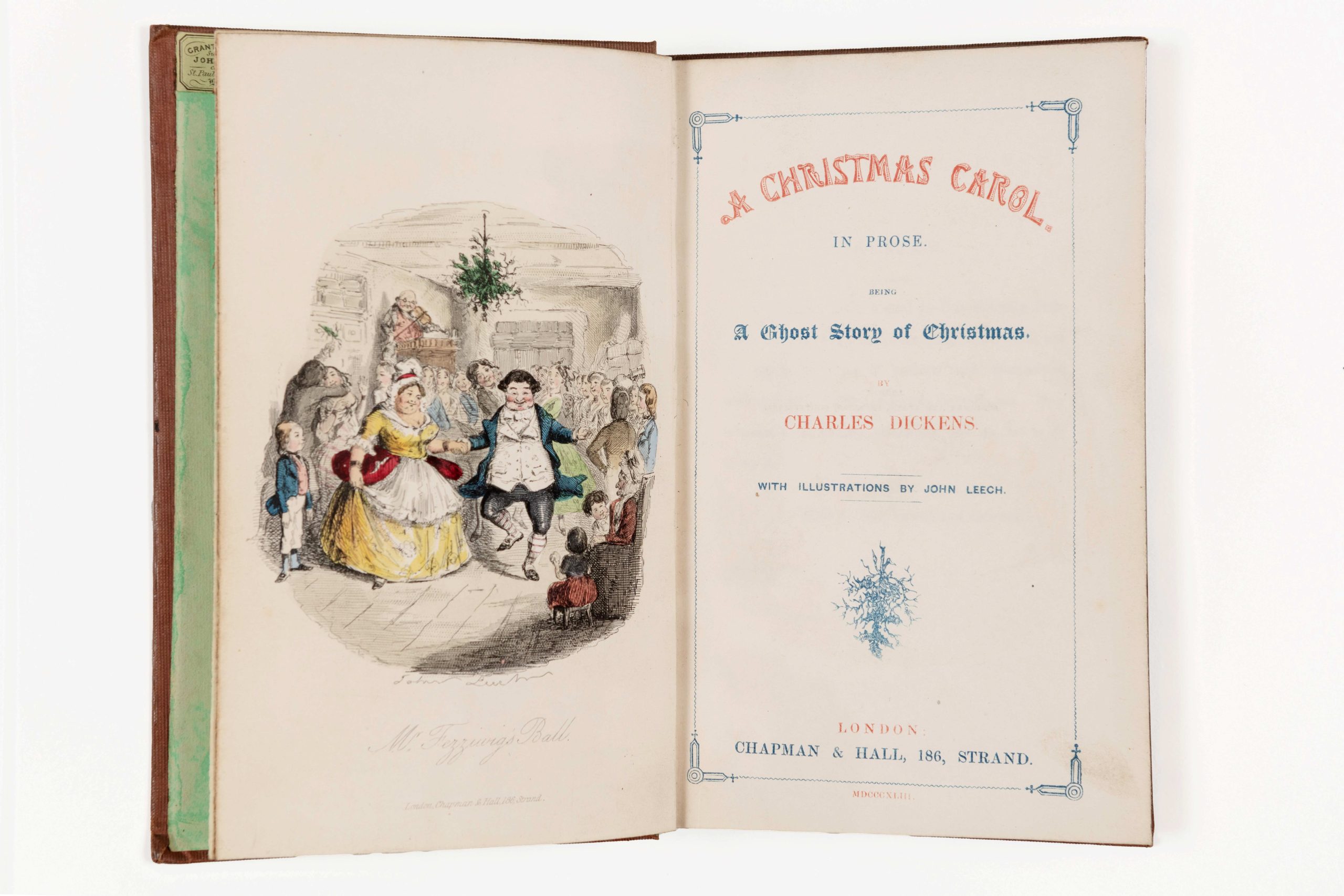The theme of adventure may conjure up images of intrepid journeys through vast deserts or dense jungles. However, it can often be found in the journeys that thousands of us take each year to go on our summer holidays.
From Naples to Pompeii, from Corfu to Marseilles
One collection which encapsulates this perfectly is the Richardson and Sturge family collection (R83/061).
The collection contains several beautifully illustrated scrapbooks filled with watercolour sketches, maps, postcards, photographs and diary entries of their travels throughout Europe as well as Northern Africa in the late 19th century and early 20th century.

Invoking the Grand Tour of the previous centuries
The travel journal of Sarah Ann Richardson conveys her journey along the Adriatic Coast travelling from Naples and Pompeii up to Venice and then down the coast to Corfu before heading back across the Mediterranean to Marseilles.
Sarah Richardson’s journey along the Adriatic Coast. Out of copyright.
A record of the times – recording the adventure
Along the way, Sarah records the sights of this trip through the medium of watercolour, providing detailed notes of the views and the dates on which they were experienced. Interspersed between the watercolours are photographs and postcards collected along the way. These offer a snapshot of the architecture and landscape of these locations. Whilst, nowadays, those of us who travel may do so to relax, there was a historical focus to Sarah’s travels. She has even painstakingly recorded the history of locations visited such as Ragusa in Sicily.

Specifically, a particular favourite is the watercolour sketch of ‘The Arena at Pola’ dated 12th April 1902. The way that the sea just teases you through the bottom arches is reminiscent of the ruins which evoke the same scene as the Colosseum in Rome. In essence, it is a beautiful sketch which captures the landscape perfectly with colour and details that allow you to imagine the reality of the sight in front of her.

The Arena at Pola
Out of copyright
A record of an adventure could be anything
In an increasingly digital world, there is something rather charming about compiling a scrapbook of your travels and filling it with tickets and other tokens collected during your trip alongside photographs of the sights. Perhaps we can learn from those who travelled in the late 19th century and early 20th century and continue this wonderful tradition.
When it comes to adventurous records at Huntingdonshire Archives, like at our sister archive, we too are not short of contenders. A record of an adventure could be anything, from a voyage to lands unknown, to the exploration of your local area. Examples of these include Lieutenant D. Buchan’s ‘Diary and Map: Expedition into Newfoundland to make contact with the Indians’ (Ref: DDMA4/5/1) to the Nature diaries of John L. Gilbert of Wansford, 1933 (Ref: 3692/2).
The travel diary of George Thornhill
One Diary we’ve grown fond of is the Travel Diary of George Thornhill of Diddington (Ref: 148/5/274).
It was written between the 30th June 1760 and the 5th September 1760. In his diary, Thornhill documents his momentous journey on horseback. Starting from his home in Diddington, he goes all the way up to Scotland, as far as John o’ Groats, and back down the west side of the Country to Fixby.



When it comes to travel diaries, what is of interest to the reader is the details of the adventure that were worth recording in the eyes of the author.
Many of George Thornhill’s entries are only about a page long. They are often sparing in detail at times (well, you have to be with a small book). Yet despite this, Thornhill is meticulous in ensuring he documents the mileage covered every day. Thankfully, he summarises this quite helpfully after the last entry, with his journey totalling “1480 English miles all on horseback”. That averages at 22 miles a day during this 67-day trip! George also likes to comment on the beauty of the stately homes he visits. For instance, when he reaches Hopetoun House in Abercorn on July 21st:
“Monday we went to see my Lord Hopetoun 10m[iles]. A prodigious large and neat piece of architecture begun about 50 years ago and the left wing not yet quite finished, the situation is beautiful upon the Frith in front and on the north and neat gardens and plantations on the west and south.”
George thornhill of diddington
Huntingdon was the birthplace of Oliver Cromwell.
I have, of course, managed to locate a reference to Cromwell in an entry for the 30th July, when George reaches Inverness:
“There is remains of Oliver Cromwell’s fort at which place is thought Fort Geo[rge] might have been made at much less expense and to have answered all the purposes as well.”
George thornhill of diddington
Although it is unclear who George Thornhill’s audience is, or whether he intended to have one at all, it is an adventurous read for those who want to explore the grounds between Huntingdonshire and Scotland without having get on horseback themselves.
Written by Laura Housden, Archives Assistant at Cambridgeshire Archives and Carys Fyson, Archives Assistant at Huntingdonshire Archives
Edited by Jake Doyle, Blog Coordinator for Explore Your Archive, MLitt Archives and Records Management Student and Archive Assistant at Suffolk Archives
Further Information
- The Cambridgeshire Archives
- The Cambridgeshire archives Social Media channel:






